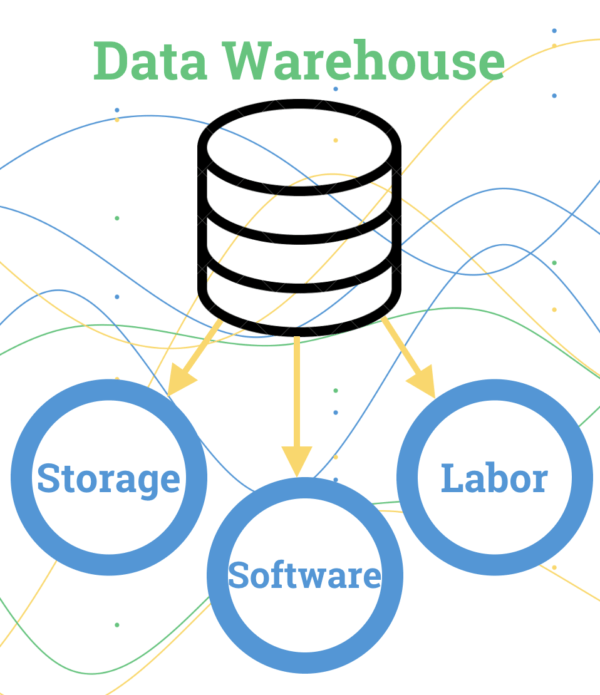Business Intelligence has advanced quickly and dramatically in recent years, and many people are taking advantage of it. To be the most successful and efficient with this newfound Business Intelligence (BI) power, it’s essential to be able to analyze and harness ALL of your data. Enter the data warehouse.
Simply put, a data warehouse is a large store of data that’s collected from multiple different sources within a business. A data warehouse is used as storage for data analytic work (OLAP systems), leaving the transactional database (OLTP systems) free to focus on transactions. With a significant amount of data kept in one place, it’s now easier for businesses to analyze and make better-informed decisions.
There are many ways to go about data warehousing. Our focus in this tutorial, however, is the benefits of building one and the basic foundation required.
Why Should I Build a Data Warehouse?
While having all of your data gathered in one place is arguably the biggest benefit of having a data warehouse, it is certainly not the only one. Here, we’ve listed some of the other benefits of having a data warehouse:
- Save Time – Business users can quickly access data from multiple sources within a data warehouse, meaning that time won’t be wasted on retrieving data from multiple sources.
- Boost Confidence – Having data transferred automatically to your data warehouse by a structured system, as opposed to being transferred by human labor, gives you more confidence that your data is clean, current and complete.
- Increase Insight – Data warehouses structure your data so it’s easily analyzable.
- Improve Security – Managing who has access to your data is much easier when there’s a centralized connection point. Data warehouses make security completely customizable, so you’re able to give access to whoever you’d like and lock down all of your other systems.
When using a data warehouse to its full potential, analyzing data becomes convenient and answering important questions about your business becomes simple. Your data is organized and available so you can get your answers quickly and securely.
Now that you know why it is beneficial to have a data warehouse for your business, let’s talk about what it takes to build one.
Structure of a Data Warehouse

Regardless of the specific approach, you take to building a data warehouse, there are three components that should make up your basic structure: A storage mechanism, operational software, and human resources.
-
Storage – This part of the structure is the main foundation — it’s where your warehouse will live. There are two main options when it comes to storage, an in-house server (Oracle, Microsoft SQL Server) or on the cloud (Amazon S3, Microsoft Azure). An in-house server is internal hardware that’s set up within your office, and the cloud is a digital storage solution based on external servers. Either is a feasible option when it comes to storage and all depends on your needs. For more information, check out this Data School tutorial.
-
Software – This is the operational part of the data warehouse structure. It’s often broken down into two categories — centralization software and visualization software. Centralization software is needed to collect and maintain the data that comes from all of your separate databases. Visualization software is needed to take the data and present it in a visual form to aid in analyzation. Some centralization software includes visualization software as part of its package, but it is highly recommended that you have both types of software regardless. For more information, check out this Data School tutorial.
-
Labor – This is the management aspect of the data warehouse, something that’s absolutely essential in having a working solution. To keep your warehouse functional, it might be necessary to hire new positions within your business. Hiring well-skilled professionals is crucial, as running a data warehouse requires a lot of knowledge. However, if you choose to have a cloud-based warehouse, it might not be necessary to have as many human resources. The cloud is managed by third-party vendors, so it’s their responsibility to do routine maintenance on hardware and servers. For more information, check out this Data School tutorial.
Conclusion
A data warehouse is a great solution to centralizing and easily analyzing your business’s data. It increases data availability, boosts efficiency in analytical activity, improves the quality of information needed for reporting, and makes working with data secure. The structure of a data warehouse is basic, consisting of a storage system, two types of software, and a few employees to make it all work.
Resources
- https://www.informatica.com/services-and-training/glossary-of-terms/data-warehousing-definition.html#fbid=GzSWLLoRF_L
- https://searchdatamanagement.techtarget.com/feature/Evaluating-your-need-for-a-data-warehouse-platform
- https://www.encorebusiness.com/blog/data-warehouse-might-need-one/
- https://www.cooladata.com/cost-of-building-a-data-warehouse/